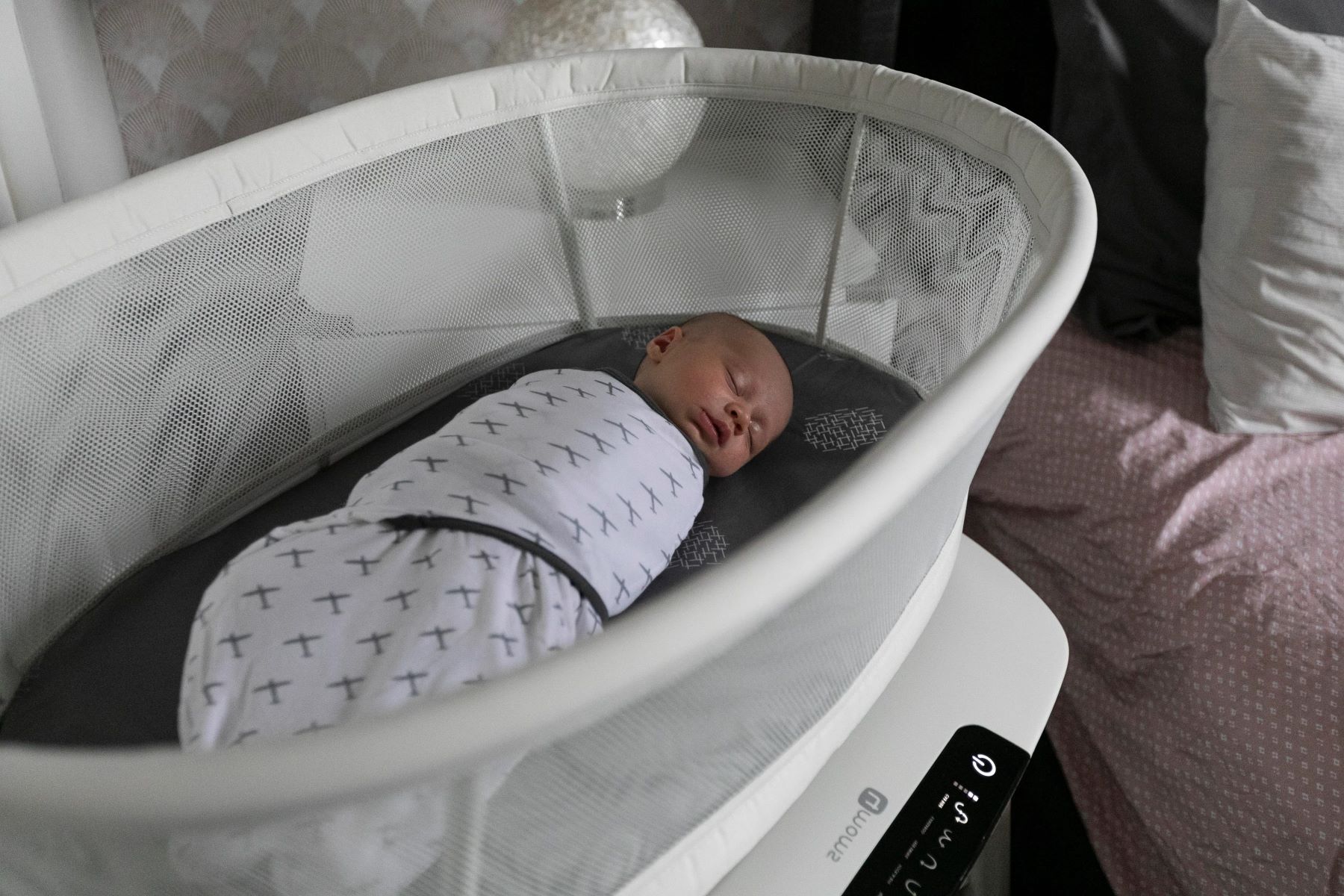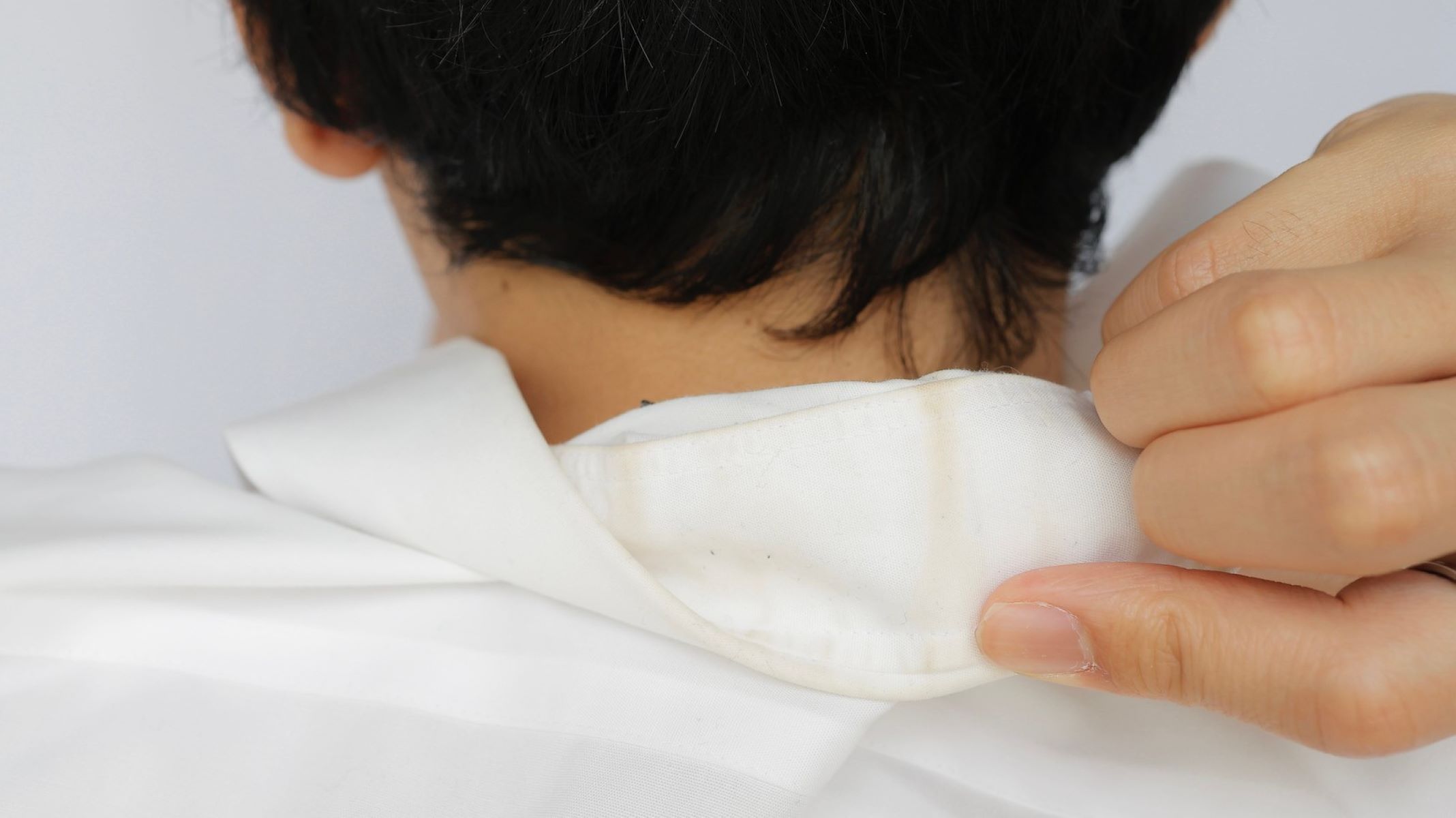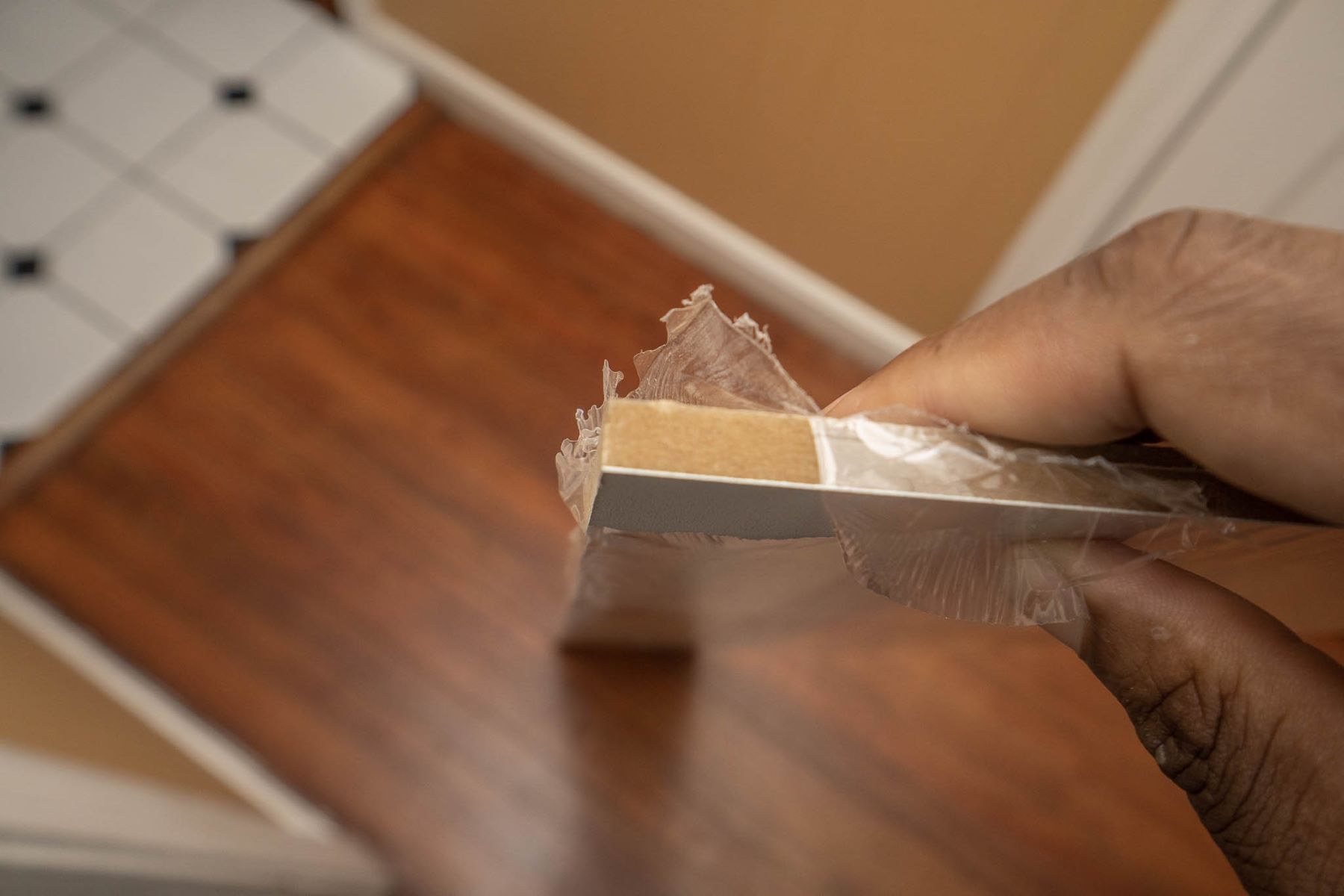Home>Parenting and Children>How To Get Newborn To Sleep In Bassinet


Parenting and Children
How To Get Newborn To Sleep In Bassinet
Published: February 26, 2024
Discover effective tips for getting your newborn to sleep in a bassinet. Learn expert parenting strategies for better sleep and happier babies.
(Many of the links in this article redirect to a specific reviewed product. Your purchase of these products through affiliate links helps to generate commission for Regretless.com, at no extra cost. Learn more)
Table of Contents
Introduction
Welcoming a newborn into the family is an incredibly joyous and transformative experience. However, it's no secret that the arrival of a little one can also bring about sleepless nights for parents. One of the most common challenges faced by new parents is getting their newborn to sleep peacefully in a bassinet. Fortunately, there are numerous strategies and techniques that can help create a soothing and secure environment for your little bundle of joy.
Ensuring that your newborn sleeps soundly in a bassinet is not only beneficial for the baby's well-being but also crucial for the overall harmony of the household. By implementing the right approach, parents can establish healthy sleep patterns for their newborn, which can contribute to the baby's growth and development.
In the following sections, we will delve into various methods to help your newborn sleep comfortably in a bassinet. From creating a cozy environment to establishing a consistent bedtime routine, we will explore practical tips and strategies that can make a significant difference in your baby's sleep quality. Additionally, we will discuss the importance of monitoring room temperature, utilizing white noise or music, and employing swaddling techniques to promote a peaceful and restful sleep for your newborn.
By incorporating these techniques into your daily routine, you can create a nurturing and secure sleep environment for your newborn, fostering a sense of safety and comfort that is essential for their well-being. Let's embark on this journey to discover effective ways to help your newborn peacefully slumber in their bassinet, allowing both the baby and the parents to enjoy a rejuvenating and restful night's sleep.
Read more: Get The Best Rest With These Tips!
Creating a Comfortable Environment
Creating a comfortable environment is paramount in ensuring that your newborn sleeps soundly in a bassinet. The surroundings play a crucial role in promoting a sense of security and tranquility for the baby, facilitating a peaceful slumber. Here are some essential tips to establish a cozy and soothing atmosphere for your little one:
-
Soft Bedding: Utilize soft, breathable bedding to line the bassinet. Opt for fitted sheets specifically designed for bassinets to ensure a snug fit. Avoid using loose bedding, such as blankets or pillows, to reduce the risk of suffocation or Sudden Infant Death Syndrome (SIDS).
-
Appropriate Room Temperature: Maintain a comfortable room temperature, ideally between 68 to 72 degrees Fahrenheit (20 to 22 degrees Celsius). This moderate temperature can help prevent the baby from becoming too hot or too cold while sleeping.
-
Dim Lighting: Create a calming ambiance by using soft, dim lighting in the nursery or sleeping area. Consider using a nightlight with a gentle glow to provide a reassuring presence during the night.
-
Comfortable Mattress: Ensure that the bassinet mattress is firm and supportive. A firm mattress reduces the risk of suffocation and provides a stable sleeping surface for the baby.
-
Safe Placement: Position the bassinet in a safe and secure location, away from potential hazards such as cords, curtains, or other items that could pose a risk to the baby.
-
Gentle Rocking or Vibrations: Some bassinets come with gentle rocking or vibration features that can help soothe the baby to sleep. If your bassinet offers these options, consider using them to create a calming sensation for your newborn.
By meticulously curating a comfortable environment for your newborn, you can significantly enhance their sleeping experience in the bassinet. These thoughtful considerations can contribute to a sense of security and well-being, fostering a peaceful and restful sleep for your little one.
Establishing a Bedtime Routine
Establishing a consistent bedtime routine is a fundamental aspect of promoting healthy sleep habits for newborns. A structured and predictable routine can signal to the baby that it's time to wind down and prepare for sleep, helping them feel secure and relaxed. Here are some essential steps to consider when establishing a bedtime routine for your newborn:
-
Set a Regular Bedtime: Establish a specific time for your baby's bedtime and strive to adhere to it consistently. This regularity helps regulate the baby's internal clock, promoting a sense of predictability and stability.
-
Gentle Wind-Down Activities: Engage in calming activities leading up to bedtime, such as gentle rocking, reading a bedtime story, or softly singing lullabies. These soothing activities can help the baby transition from wakefulness to a more relaxed state.
-
Warm Bath: A warm bath can be a soothing and enjoyable prelude to bedtime. The warm water can help relax the baby's muscles and create a tranquil atmosphere, preparing them for sleep.
-
Dim the Lights: Lower the lights in the nursery or sleeping area to create a serene and peaceful environment. Dim lighting can signal to the baby that it's time to settle down for the night.
-
Comforting Feeding: If your baby is due for a feeding, consider offering a comforting feeding session as part of the bedtime routine. Whether breastfeeding or bottle-feeding, this nurturing interaction can provide the baby with a sense of security and contentment.
-
Calm Environment: Ensure that the surrounding environment remains calm and peaceful during the bedtime routine. Minimize loud noises and stimulating activities to help the baby transition into a restful state.
By incorporating these elements into a consistent bedtime routine, you can help your newborn associate these activities with the impending arrival of sleep. Over time, the routine can become a comforting and reassuring ritual for the baby, setting the stage for a peaceful and restful night's sleep.
Remember, every baby is unique, so it's essential to observe your baby's responses and adjust the routine as needed to best suit their individual preferences and needs. With patience and attentiveness, you can establish a bedtime routine that nurtures a sense of security and comfort for your newborn, paving the way for peaceful nights and well-rested mornings.
Using White Noise or Music
Introducing white noise or soothing music can be a valuable tool in creating a calming and sleep-inducing environment for your newborn. The gentle, consistent sounds can mimic the familiar and comforting noises experienced in the womb, helping the baby feel secure and at ease. Here's a closer look at how white noise or music can positively impact your newborn's sleep:
White Noise
White noise, characterized by a consistent sound that spans a range of frequencies, can effectively mask other disruptive noises and create a soothing backdrop for your baby's sleep. The steady hum of white noise can help drown out sudden sounds that might startle the baby, promoting uninterrupted sleep. Common sources of white noise include sound machines, fans, or specially designed white noise devices. When using white noise, it's important to ensure that the volume is kept at a safe and moderate level, similar to the sound of a gentle shower or soft radio static.
Read more: How To Give A Sponge Bath To A Newborn
Soothing Music
Soft, gentle music can also play a significant role in lulling your newborn into a peaceful slumber. Consider playing calming lullabies, classical music, or specially curated playlists designed for relaxation. The rhythmic and melodic qualities of music can have a tranquilizing effect, helping the baby relax and drift off to sleep. When choosing music for your baby, opt for compositions with a slow tempo and minimal variations in volume to create a soothing auditory environment.
Implementation
When incorporating white noise or music into your baby's sleep routine, it's essential to use these auditory stimuli as part of a consistent bedtime ritual. By associating the presence of white noise or music with the onset of sleep, your baby can learn to recognize these cues as signals for relaxation and rest. Whether it's the gentle whir of a sound machine or the melodic strains of a lullaby, these auditory elements can become comforting and familiar components of your baby's sleep environment.
Caution
While white noise and music can be beneficial for promoting a peaceful sleep environment, it's crucial to exercise caution and moderation. Ensure that the volume of the white noise or music is kept at a level that is gentle and soothing, avoiding excessively loud or jarring sounds that could potentially disturb the baby. Additionally, be mindful of the duration of exposure to white noise or music, allowing for periods of quiet rest as well.
By incorporating white noise or music into your newborn's sleep routine, you can create a serene and comforting atmosphere that encourages restful and rejuvenating sleep. These auditory elements can serve as gentle companions for your baby, fostering a sense of security and tranquility as they peacefully slumber in their bassinet.
Swaddling Techniques
Swaddling is a time-honored practice that involves snugly wrapping a baby in a blanket or cloth to create a secure and comforting cocoon. This age-old technique can work wonders in promoting better sleep for newborns, replicating the snug environment of the womb and helping the baby feel safe and secure. When done correctly, swaddling can soothe the baby's startle reflex, prevent unnecessary wake-ups, and contribute to longer, more restful sleep periods. Here are essential swaddling techniques to ensure your newborn sleeps peacefully in the bassinet:
-
Choosing the Right Blanket: Select a lightweight, breathable blanket specifically designed for swaddling. Opt for a square-shaped blanket to facilitate easier wrapping and ensure that it is large enough to securely wrap around the baby without being too restrictive.
-
Positioning the Blanket: Lay the blanket on a flat surface in a diamond shape, with one corner folded down to form a straight edge. Place the baby on their back with their head above the folded edge, ensuring that their shoulders are aligned with the top of the blanket.
-
Securing the Arms: Gently hold the baby's right arm against their body and pull the blanket corner near their right hand across their body, tucking it snugly beneath their left side. Next, bring the bottom corner of the blanket up over the baby's feet and pull it towards their head, leaving enough space for the baby's legs to move freely.
-
Wrapping the Left Side: Hold the baby's left arm against their body and pull the remaining blanket corner across their body, wrapping it securely around the baby. Tuck any excess fabric underneath the baby to ensure a snug and secure swaddle.
-
Checking for Comfort and Safety: Ensure that the swaddle is snug but not too tight, allowing for gentle movement of the baby's hips and legs. It's important to avoid over-tightening the swaddle, as this can restrict the baby's natural hip development and lead to discomfort.
-
Monitoring the Baby's Temperature: Keep a close eye on the baby's temperature to prevent overheating. Swaddling adds an extra layer of warmth, so it's crucial to dress the baby in appropriate clothing underneath the swaddle to maintain a comfortable body temperature.
By mastering the art of swaddling, you can create a cozy and secure sleeping environment for your newborn, helping them feel calm and settled in their bassinet. Swaddling can be a valuable tool in soothing your baby and promoting restful sleep, allowing both the baby and the parents to enjoy peaceful nights and rejuvenating rest.
Read more: How To Get A Title For A Motorcycle
Feeding and Burping Strategies
Ensuring that your newborn is well-fed and comfortable plays a pivotal role in facilitating peaceful sleep in the bassinet. Implementing effective feeding and burping strategies can significantly contribute to your baby's overall comfort and contentment, setting the stage for a restful slumber. Here are essential feeding and burping strategies to optimize your newborn's sleep experience:
Feeding Techniques
Breastfeeding
For breastfeeding mothers, adopting a nurturing and relaxed approach during feeding sessions can create a tranquil and bonding experience for both the mother and the baby. Find a quiet and comfortable space for breastfeeding, minimizing distractions and creating a serene environment. Encourage skin-to-skin contact during feeding, as this intimate connection can promote a sense of security and well-being for the baby. Additionally, ensure proper latching to facilitate efficient and satisfying feedings, which can contribute to the baby's overall contentment and readiness for sleep.
Bottle-Feeding
If you opt for bottle-feeding, choose a quiet and peaceful setting to minimize disruptions during feeding times. Hold your baby in a semi-upright position to reduce the risk of air ingestion, which can lead to discomfort and disrupt sleep. Utilize slow-flow nipples to pace the feeding and allow the baby to feed at a comfortable and unhurried pace. This gentle approach to bottle-feeding can help prevent overfeeding and minimize the likelihood of discomfort or reflux that may interfere with the baby's sleep.
Burping Techniques
Burping your baby after feeding is essential to release any trapped air in their stomach, reducing the likelihood of discomfort and promoting better sleep. Here are effective burping techniques to incorporate into your baby's routine:
Over-the-Shoulder Method
Place your baby upright against your shoulder, supporting their bottom with one hand and gently patting or rubbing their back with the other. The gentle pressure and rhythmic motion can help release trapped air, providing relief and comfort for the baby.
Sitting on Your Lap
Sit your baby on your lap in a slightly forward-leaning position, supporting their chest and chin with one hand while using the other hand to pat or rub their back. This position can facilitate the release of air bubbles, reducing the potential for post-feeding discomfort and promoting a peaceful transition to sleep.
By implementing these feeding and burping strategies, you can create a nurturing and comfortable experience for your newborn, minimizing the likelihood of digestive discomfort that may disrupt their sleep. These gentle and attentive approaches to feeding and burping can contribute to a sense of well-being and relaxation, allowing your baby to peacefully slumber in their bassinet, undisturbed by common feeding-related discomforts.
Monitoring Room Temperature
Monitoring the room temperature is a crucial aspect of creating a comfortable and safe sleep environment for your newborn. Maintaining an optimal room temperature not only promotes restful sleep but also helps prevent the baby from becoming too hot or too cold, reducing the risk of discomfort and potential health issues.
The ideal room temperature for a baby's sleeping environment typically ranges between 68 to 72 degrees Fahrenheit (20 to 22 degrees Celsius). This moderate temperature range provides a comfortable and conducive setting for the baby to sleep peacefully. It's important to use a reliable room thermometer to accurately monitor the temperature, ensuring that it remains within the recommended range throughout the day and night.
During the warmer months, it's essential to safeguard against overheating by using lightweight and breathable bedding, dressing the baby in light sleepwear, and ensuring adequate air circulation in the nursery. Additionally, utilizing fans or air conditioning to maintain a comfortable ambient temperature can help mitigate the effects of heat and humidity, creating a soothing environment for the baby to rest.
In colder weather, it's crucial to protect the baby from chilly temperatures by using appropriate layers of clothing and blankets to keep them warm and snug. However, it's important to avoid overdressing the baby, as excessive layers can lead to overheating. Utilizing a room heater or a safe, regulated heating system can help maintain a cozy and consistent temperature in the nursery, ensuring that the baby remains comfortably warm during sleep.
Regularly monitoring the room temperature and making necessary adjustments based on seasonal changes and fluctuations can contribute to a tranquil and secure sleep environment for your newborn. By prioritizing the maintenance of an optimal room temperature, you can help your baby sleep soundly in their bassinet, free from the discomfort of extreme temperatures.
Remember, every baby is unique, and their individual comfort preferences may vary. Therefore, it's important to observe your baby's cues and adjust the room temperature and bedding accordingly to ensure their well-being and comfort. By attentively monitoring and regulating the room temperature, you can create a nurturing and safe sleep environment that supports your newborn's peaceful slumber.
Read more: How To Get Better At Soccer
Safety Precautions
Ensuring the safety of your newborn while they sleep in a bassinet is of paramount importance. By implementing essential safety precautions, you can create a secure and risk-free sleeping environment for your little one. Here are crucial safety measures to consider:
-
Firm and Snug Mattress: The bassinet should be equipped with a firm and well-fitting mattress to reduce the risk of suffocation and ensure a stable sleeping surface for the baby. Avoid using additional padding or soft bedding that may pose a suffocation hazard.
-
Proper Assembly and Maintenance: Carefully follow the manufacturer's instructions when assembling the bassinet to guarantee its structural integrity and stability. Regularly inspect the bassinet for any signs of wear or damage, ensuring that it remains in optimal condition for safe use.
-
Positioning and Location: Place the bassinet in a secure and stable location, away from potential hazards such as cords, curtains, or other items that could pose a risk to the baby. Additionally, ensure that the bassinet is positioned away from windows, heating vents, or other sources of drafts or direct sunlight.
-
Safe Sleep Position: Always lay your baby on their back for sleep to reduce the risk of Sudden Infant Death Syndrome (SIDS). This recommended sleep position promotes optimal airflow and minimizes the likelihood of breathing obstructions.
-
Avoid Overcrowding: Refrain from placing stuffed animals, loose blankets, or toys in the bassinet, as these items can pose suffocation hazards. Keep the sleeping area free from clutter to create a safe and unobstructed space for the baby.
-
Monitoring Temperature: Regularly monitor the room temperature to ensure that it remains within the recommended range. Prevent overheating by dressing the baby in appropriate sleepwear and using lightweight, breathable bedding during warmer months.
-
Supervision and Vigilance: Always keep a watchful eye on your baby while they sleep in the bassinet. Regularly check on the baby to ensure their well-being and comfort, especially during the initial stages of sleep.
By diligently adhering to these safety precautions, you can establish a secure and nurturing sleep environment for your newborn. Prioritizing safety measures not only promotes peaceful sleep for the baby but also offers parents peace of mind, knowing that their little one is protected and cared for as they peacefully slumber in their bassinet.
Conclusion
In conclusion, helping your newborn sleep peacefully in a bassinet is a multifaceted endeavor that encompasses creating a comfortable environment, establishing a consistent bedtime routine, utilizing white noise or music, mastering swaddling techniques, implementing effective feeding and burping strategies, monitoring room temperature, and prioritizing essential safety precautions. By integrating these strategies into your daily routine, you can foster a serene and secure sleep environment for your little one, promoting restful and rejuvenating sleep.
Creating a comfortable environment involves thoughtful considerations such as using soft bedding, maintaining an appropriate room temperature, and ensuring a gentle and soothing ambiance. These elements contribute to a sense of security and tranquility, laying the foundation for peaceful slumber. Additionally, establishing a consistent bedtime routine can signal to the baby that it's time to wind down and prepare for sleep, fostering predictability and stability.
The use of white noise or soothing music can create a calming auditory backdrop, while swaddling techniques can mimic the snug environment of the womb, providing a sense of security and comfort for the baby. Effective feeding and burping strategies play a pivotal role in ensuring the baby's comfort and contentment, setting the stage for restful sleep.
Monitoring room temperature is essential for maintaining a comfortable and safe sleep environment, while prioritizing safety precautions helps mitigate potential risks and hazards, ensuring the baby's well-being during sleep.
By incorporating these strategies into your daily routine, you can create a nurturing and secure sleep environment for your newborn, fostering a sense of safety and comfort that is essential for their well-being. As a result, both the baby and the parents can enjoy peaceful nights and well-rested mornings, contributing to a harmonious and fulfilling family dynamic.
In essence, the journey of helping your newborn sleep peacefully in a bassinet is a labor of love, guided by attentiveness, patience, and a deep commitment to nurturing your baby's well-being. By embracing these strategies and techniques, you can embark on a path that leads to restful nights, joyful mornings, and cherished moments with your precious little one.












